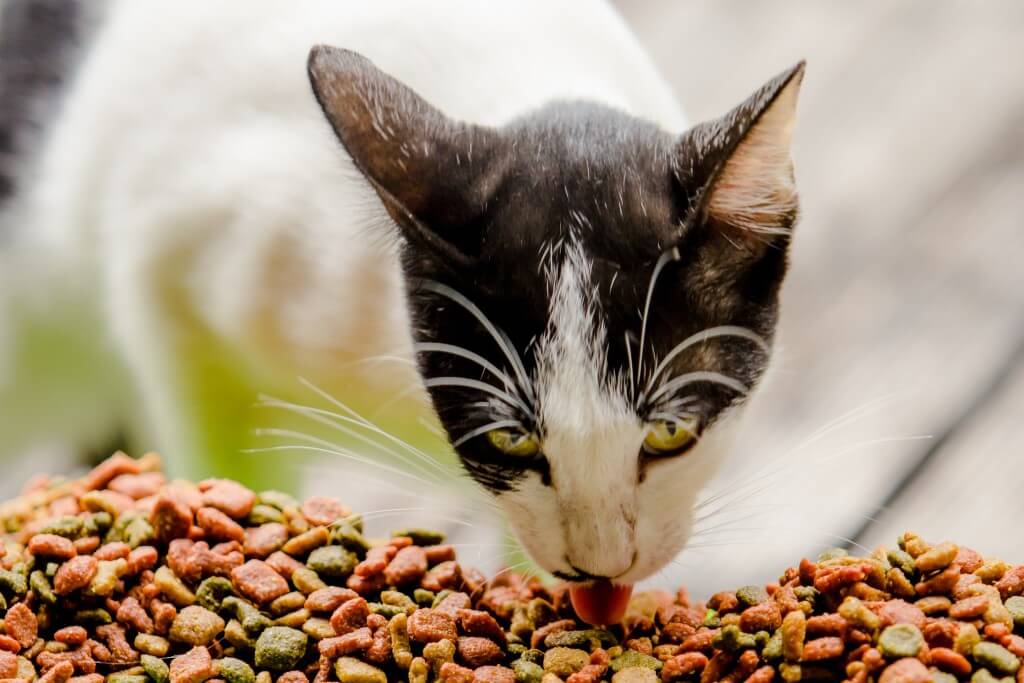
Raw Cat Food? Really?
Sure. It makes sense. Cats are natural hunters and carnivores - just consider their ancestry. The cat that is sitting there purring on your lap is a true or obligate carnivore (meat only diet) and is specifically designed by nature to seek out small rodents and birds. Her digestive tract was also designed specifically for the assimilation of raw meat.
The Advantages of Raw Cat Food
Just as it is with humans, your cat's diet is the bedrock of her health. The fresher the diet, the more nutrients are available for the cat's system to use for building immunity, to heal quickly when injured or ill, and to defend against disease. Raw cat food diets have been shown to aid a cat's body when dealing with many common infirmities like flea infestations, hot spots, excessive shedding, poor dental and gum health, allergies, gastrointestinal issues like IBD (Inflammatory Bowel Disease), immune disorders and degenerative diseases. When it comes to your cat's urinary tract, food that is completely natural has proven to be the one of best things to keep her in optimum urinary health.
Raw diets have been business as usual in Europe for years, particularly Germany, where it is regularly recommended by veterinarians. The hesitation to switch to raw meat here in the U.S. appears to originate from a fear of salmonella, E. Coli and parasites. In reality, people (many of them vets) who have been feeding their animals on a raw diet for years have encountered no trouble with this at all, and experts have concluded that this fear is completely unfounded. Remember, cats' digestive systems are designer-built to accommodate raw meat. A cat may contract parasites after an instance of eating wild, whole prey or game meats, but is extremely unlikely to do so with correctly handled human grade meats. Infection is much more likely to happen due to her ingestion of feces or soil, or from improperly handled meat.
The research sited in America supporting a raw cat food diet is actually quite persuasive. A long-term study carried out by Francis M. Pottenger, Jr., MD, between 1932 and 1942, began rather by accident. Dr. Pottenger kept cats as lab animals for experiments in human health (I know, but keep reading). As both his research and cat population grew, he resorted to feeding them raw meat scraps from a local packing plant rather than cooked kitchen leftovers. In just a few months, he began to notice distinct improvements in those cats who had been eating the raw meat.
This inspired Dr. Pottenger to craft a completely new experiment. He segregated cats into different groups - some of which were fed a cooked meat diet and others who received a diet of strictly raw meat. Detailed observations were made over many generations of cats. At the end of the study, Dr. Pottenger concluded that cats fed a heat processed diet were nutrient deficient and suffered from countless health issues, from low immunity, irritable behavior and allergies, to skeletal deformation, organ malfunction, poor development during kittenhood, low birth rate, birth defects, sterility, and shortened life-span.
There are exceptions to the notion that raw is always better. Older, weaker cats who may not easily tolerate unprepared food, or cats with certain gastrointestinal issues where the stomach needs to be brought back to a healthier state using herbs and/or supplements should have a home prepared, cooked diet as the best alternative to a raw food diet.
Raw Cat Food Diets
Ideally, our feline companions would eat an all raw diet that includes some organ meat and bones. In general, the more raw food you can add to your cat's diet, the better, but any is certainly better than none at all. Some guardians opt to feed their companions a raw and dry - dehydrated or kibble - diet, either mixing them together or feeding raw for one meal every day, and dry or cooked for the other. It needn't be all that complicated! Feed your cat raw chicken necks and chicken backs as some or all of a meal many times each week, if you wish. Raw chicken bones don't chip, they crunch. This is a great way to clean your cat's teeth, exercise her chewing muscles, and supply a natural source of balanced calcium and phosphorus, as well. Not surprisingly, naturally raised, hormone- and antibiotic-free or organic meat is considered ideal.
Your cat may experience some diarrhea, constipation, or both as her system adjusts to the new diet. This is just a detoxification process as they make the transition to a healthier way of eating. Don't forget to go slowly and feed small amounts initially. When first introducing raw bones, bear in mind that they must always be ground. If your kitty has a delicate digestive tract, consider grinding meat and bones through a quarter inch blade before feeding. While ground bones don't have the same teeth cleaning benefits as whole bones, this is a good way to get your cat used to them at the outset. Again, the key is to go slowly and persist. In the long term, your kitty's improved health and energy will be your reward.
Commonsense precautions should be taken when dealing with raw meat. Wash your hands completely after handling it. Defrost meat in the fridge; don't leave it sitting on the counter at room temperature. Warm water can be used to thaw or warm the food after it's been partially defrosted in the fridge. Do not microwave raw food as the live enzymes will be damaged and the bones will toughen; even after only 30 seconds of microwaving the bones become hard.
It's recommended that you avoid feeding your cat pork, as it's been shown to be a source of Trichinella. If bacteria has you worried, try rinsing the food with several drops of food-grade hydrogen peroxide in a sink of water, or half a teaspoon of liquid grapefruit seed extract in a sink of water. These will help kill any surface bacteria.
Transitioning to Raw Cat Food
If kitty don't like it, kitty don't eat it. You know your cat will do her best to dictate what goes into her food bowl. So, it's best to introduce raw food slowly into your cat's diet over the course of a couple of weeks. If she is accustomed to having food available during the day, first transition her to eating only 2 to 3 times every day before starting the transition to raw food. Think about transitioning her entirely to raw at the very beginning, even if you at plan to ultimately feed her a mixture of raw and cooked or dry. This can give your cat's digestive system the ideal environment for generating healthy enzymes and flora. Begin with one teaspoon for about 3 days. Then increase to two teaspoons for several days, decreasing the amount of regular food by one quarter to one half in general proportion to the raw. Work up to replacing at least half the normal diet for several days. Finally, replace one full meal with raw food for a day or two, then complete the transition to raw food for all meals.
It's recommended that you supplement with digestive enzymes and probiotics for at least the first two weeks to help your cat's natural digestive processes wake up and get working again after having eaten nothing but cooked foods for so long. If your cat is resistant to the idea of going raw at first, you may want to use a bit of canned food to entice her. Cats, in particular, can be resistant to a change in diet. They tend to fixate on whatever food they were weaned onto and will mightily resist switching to a healthier diet. It will most likely take some serious commitment on your part to transition your kitty to a raw cat food diet, but it is well worth it for the long term health of your little companion.

Leave a comment
This site is protected by hCaptcha and the hCaptcha Privacy Policy and Terms of Service apply.